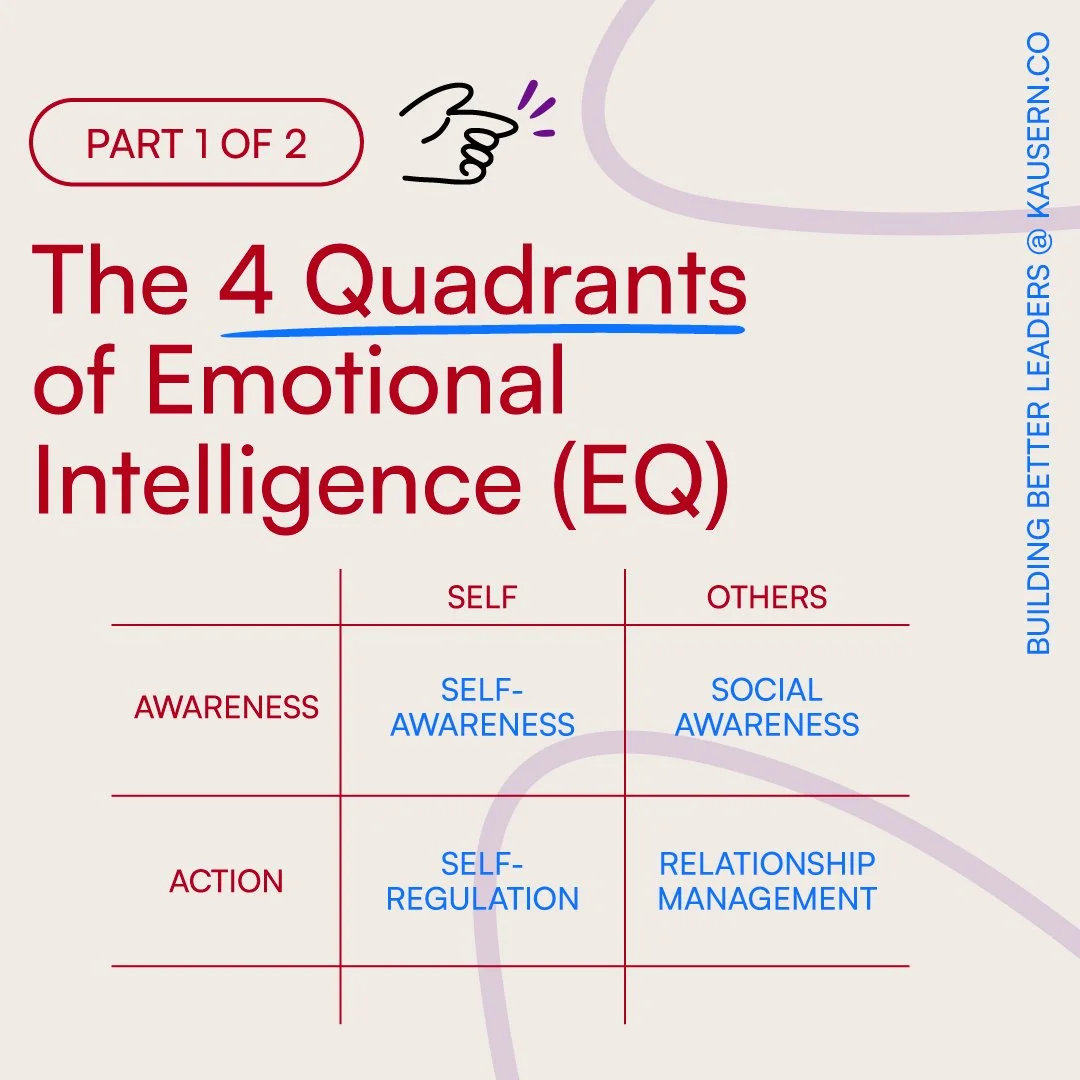The 4 quadrants of emotional intelligence
We all know someone who seems to lack emotional intelligence (EQ), but what exactly are the signs?
✖️Difficulty Recognizing Emotions: Struggles to understand their own emotions.
✖️Lack of Self-Regulation: Acts impulsively without considering consequences.
✖️Inability to Handle Criticism: Becomes overly defensive, seeing feedback as personal attacks.
✖️Lack of Active Listening: Frequently interrupts and shows little regard for others' input.
✖️Inappropriate Nonverbal Cues: Misuses facial expressions, gestures, and body language.
✖️Inability to Manage Stress: Easily overwhelmed, leading to reactive behavior.
✖️Limited Emotional Expression: Shows a narrow range of emotions, making connections hard.
✖️Poor Empathy: Struggles to understand or share others’ feelings, often responding insensitively.
✖️Limited Social Skills: Appears socially awkward or inappropriate in social situations.
✖️Poor Interpersonal Relationships: Has trouble building and maintaining positive relationships.
✖️Poor Conflict Resolution: Escalates conflicts rather than resolving them.
✖️Unaware of Impact on Others: Lacks awareness of how their actions affect others.
THE FOUR QUADRANTS OF EMOTIONAL INTELLIGENCE (EQ)
The signs above fall into the four key components of EQ, which can be viewed through a 2x2 matrix (see image). By plotting the shortfalls onto this matrix, we are able to identify the areas of growth clearly:
✅ Self-Awareness Quadrant: Leaders with high self-awareness accurately assess their thoughts, feelings, strengths, and weaknesses, understanding their impact on decisions and interactions.
✅ Self-Regulation Quadrant: Effective leaders control their impulses and make thoughtful decisions under stress.
✅ Social Awareness Quadrant: Leaders with high social awareness perceive the emotional climate and respond appropriately.
✅ Relationship Management Quadrant: Successful leaders connect with others, fostering collaboration and a productive environment.
Leaders might excel technically but if they lack EQ, their skills could be overshadowed by poor interpersonal dynamics. High EQ is crucial for maintaining employee engagement and reducing turnover.
Stay tuned for part 2 to discover how to take actionable steps to enhance your EQ across all four quadrants.

